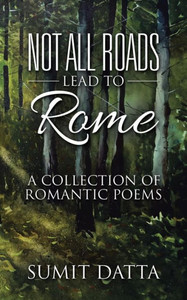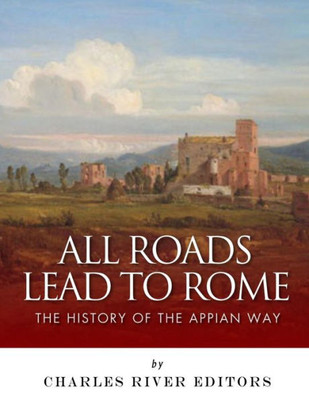

All Roads Lead to Rome: The History of the Appian Way
CreateSpace Independent Publishing Platform
ISBN13:
9781986037907
$13.20
*Includes pictures. *Includes ancient accounts of the Appian Way's history and construction. *Explains the Appian Way's role during the Second Punic War and Spartacus' rebellion. *Includes a bibliography for further reading. "Appia teritur regina longarum viarum" ("The Appian Way is the queen of the long roads") - Statius The modern world has the ancient Romans to thank for the origins of many modern technologies, conveniences, and ideas such as running water, baths, and republican style government, but roads are another influence the Romans have had on the modern world that are often taken for granted. Although Roman roads may not have attained the glamorous status of other inventions, their influence is just as profound; roads provide essential communication and transport lines for any country - they are the veins and arteries that move the life-blood of trade and peoples that make a country thrive. Indeed, throughout the hundreds of years when Rome was ascendant in the ancient world, the roads they built held together first their republic and then their empire into a cohesive unit. Many of these roads were important, but one road stands above all others: the Appian Way (or Via Appia as it was called in the Latin spoken by the Romans). Since the Appian Way was first built in 312 BC, it has inspired poets, slaves, and conquerors, and Mark Antony, Spartacus, Hannibal, and Horace are just a few of the notable historical personalities who traveled on the Appian Way. For some, marching along the Appian Way became an integral part of their lives, while others lost their lives along the road (Hamblin and Grunsfeld 1974, 4-5). Fittingly, the road's construction was part of a long process in road building that was also indicative of Roman expansion across the Mediterranean, and at the peak of Roman power, the Appian Way extended over 300 miles. Due to its importance in world history and its primacy among other ancient Roman roads, a Roman named Publius Painius Statius assigned the moniker "lungarum regina viarum" ("Queen of long-distance roads") to the Appian Way in the 1st century AD, over 300 years after it was first built (Hamblin and Grunsfeld 1974, 3). The moniker stuck, and it has been called the Queen of Roads ever since. But while the Appian Way will always be associated with Ancient Rome, it was not only important to the ancient Romans but also in later periods of world history. It was deemed crucial enough that the Vatican ordered a parallel road network constructed alongside it during the Middle Ages, and it played an important role as recently as World War II. At the same time, the Appian Way has been so well-preserved that people can still walk along it today, even as they see Roman ruins on the sides of the road that remind tourists and viewers of both Rome's proud history and its eventual collapse. All Roads Lead to Rome: The History of the Appian Way chronicles the construction and history of Rome's most important road. Along with pictures of important people, places, and events, you will learn about the Appian Way like never before, in no time at all.
- | Author: Charles River Charles River Editors
- | Publisher: CreateSpace Independent Publishing Platform
- | Publication Date: Feb 27, 2018
- | Number of Pages: 66 pages
- | Language: English
- | Binding: Paperback
- | ISBN-10: 1986037908
- | ISBN-13: 9781986037907
- Author:
- Charles River Charles River Editors
- Publisher:
- CreateSpace Independent Publishing Platform
- Publication Date:
- Feb 27, 2018
- Number of pages:
- 66 pages
- Language:
- English
- Binding:
- Paperback
- ISBN-10:
- 1986037908
- ISBN-13:
- 9781986037907





